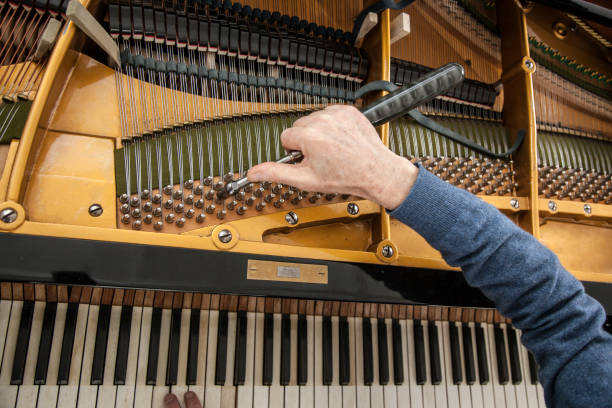
Tuning the piano involves calibrating the tension of the strings on the piano, which alters the pitch of the strings. This should be done regularly—technicians usually recommend once every 6 months—as pianos go out of tune very quickly due to:
- Environment
Changing humidity or temperature levels around the piano will cause the wood to expand or contract. - Playing
Yes. Constant and heavy practice (usually noticeable in practice rooms in music schools) will cause the piano to go out of tune as well.
Let us listen to a comparison of before and after tuning:
- It is evident that after tuning, the piano sounds “better.”
Most keys on the piano have at least two or three strings that need to be vibrating at the same frequency. Over time, the tension on each string will change, thus changing our frequency by different magnitudes. A discrepancy of frequencies between each string would cause an acoustical phenomenon known as “beats,” which is naturally less pleasant to the ears. - Tuning your piano regularly protects the integrity of your instrument
Pianos that are tuned regularly will stay in tune for a much longer period of time.
Tuning a piano that has not been tuned in a while will require your technician to do what is known as a “pitch-raise,” a slightly more tedious process that stretches your strings (that has gone flat). Technicians normally charge more for this service too.

